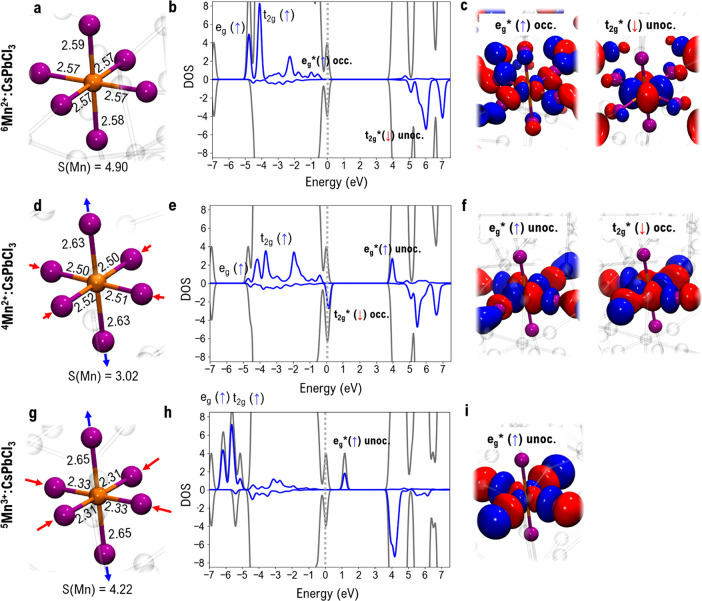Figure 2.
Structural properties, DOSs with Mn contributions, and key orbitals involved in spin/charge transitions for Mn:CsPbCl3. (a) 6Mn2+:CsPbCl3 first coordination sphere with distances in Å and spin moments from Mulliken population analysis. Orange spheres represent Mn atoms, purple ones chloride atoms; species outside the Mn first coordination shell are transparent. (b) Total (gray) and manganese (blue) DOS (with negative/positive spin differentiation) for 6Mn2+:CsPbCl3 computed at the PBE0 level of theory, with Mn active molecular orbitals labeled. The dashed vertical bar represents the Fermi level. (c) Isodensity plots of orbitals involved in spin/charge transitions for occupied eg* (↑) and unoccupied t2g* (↓) single-particle states of 6Mn2+:CsPbCl3. (d) 4Mn2+:CsPbCl3 first coordination sphere. (e) Total (gray) and manganese (blue) DOS for 4Mn2+:CsPbCl3. (f) Isodensity plot of orbitals involved in spin/charge transitions for unoccupied eg* (↑)and occupied t2g* (↓) single-particle states of 4Mn2+:CsPbCl3. (g) 5Mn3+:CsPbCl3 first coordination sphere. (h) Total (gray) and manganese (blue) DOS for 5Mn3+:CsPbCl3. (i) Isodensity plot of orbitals involved in spin/charge transitions for unoccupied eg* (↑) single-particle state of 5Mn3+:CsPbCl3.

